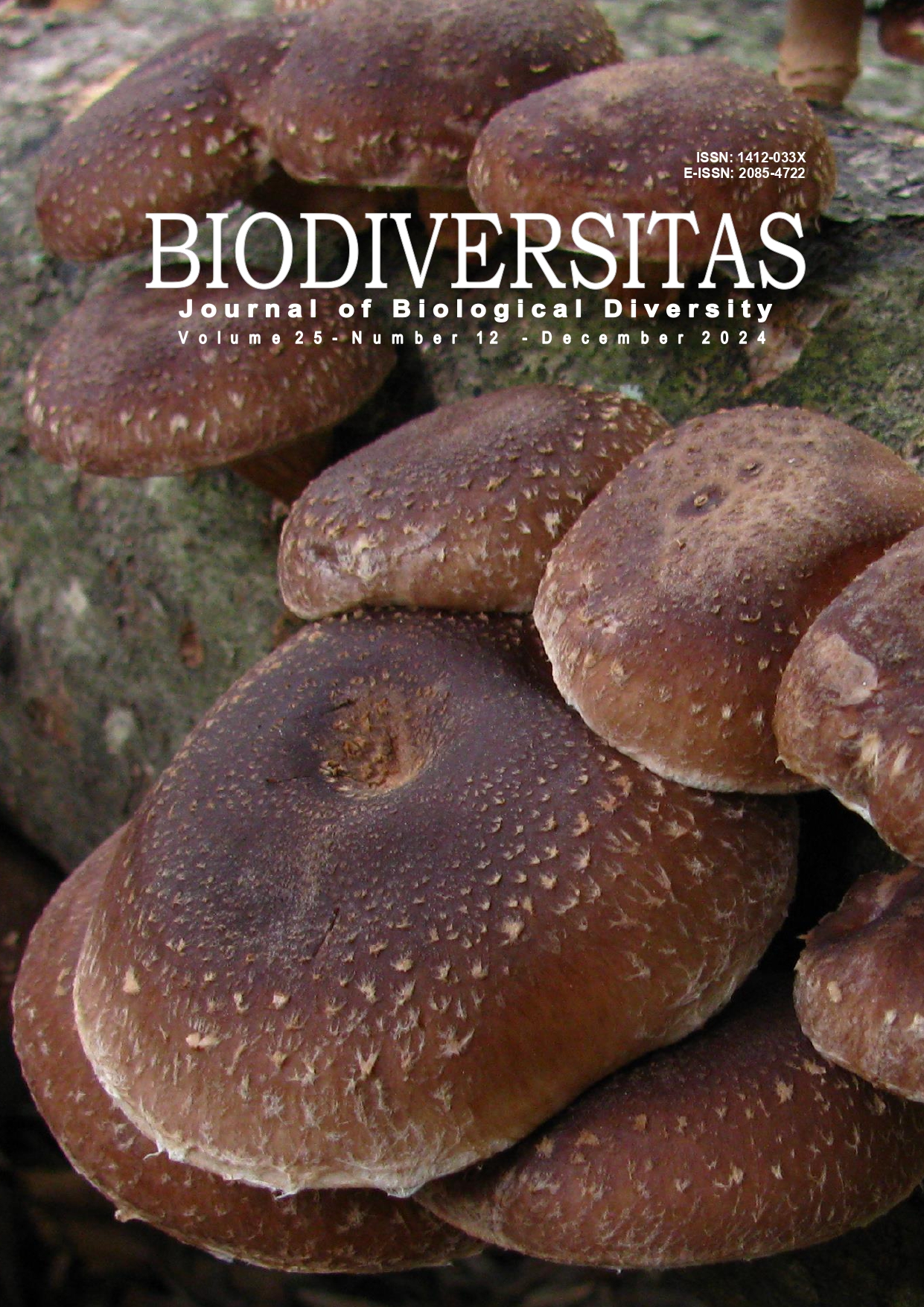Species distribution model and population dynamics of invasive alien plant Calliandra calothyrsus in Gunung Ciremai National Park, West Java, Indonesia
##plugins.themes.bootstrap3.article.main##
Abstract
Abstract. Nasihin I, Widhiono I, Sudiana E, Nurdin, Herlina N, Imaningsih W. 2024. Species distribution model and population dynamics of invasive alien plant Calliandra calothyrsus in Gunung Ciremai National Park, West Java, Indonesia. Biodiversitas 25: 4806-4815. Invasive alien plants are a serious threat to conservation areas since they will threaten biodiversity by over-dominating species composition and reducing diversity. However, conservation area managers have not taken invasive alien plant management seriously. Calliandra calothyrsus is one of the invasive alien plant species that has been reported to occur in conservation areas. The purpose of this study was to develop a habitat suitability model and investigate population dynamics of C. calothyrsus in Gunung Ciremai National Park (GCNP), West Java Province, Indonesia. Maximum Entropy (MaxEnt) was used to build the model using 13 environmental predictors, including climate, physical, and soil characteristic variables. Population structure data were collected from 98 sampling plots, each measuring 10x10 m. The population dynamics and distribution of C. calothyrsus populations were analyzed using RangeShifter software with 50 years of simulation. The results showed an AUC value of >0.80, indicating the distribution model of C. calothyrsus has a high level of agreement between the model prediction and actual observation. Simulation analysis shows that the population of C. calothyrsus in GCNP will continue to increase over the next 50 years and spread throughout the park from where the occurrences of C. calothyrsus were recorded. The findings of this study suggest that managing the growth of the C. calothyrsus population from seedling to sapling is necessary, while restoring bare ground and shrub can prevent the spread of C. calothyrsus.

